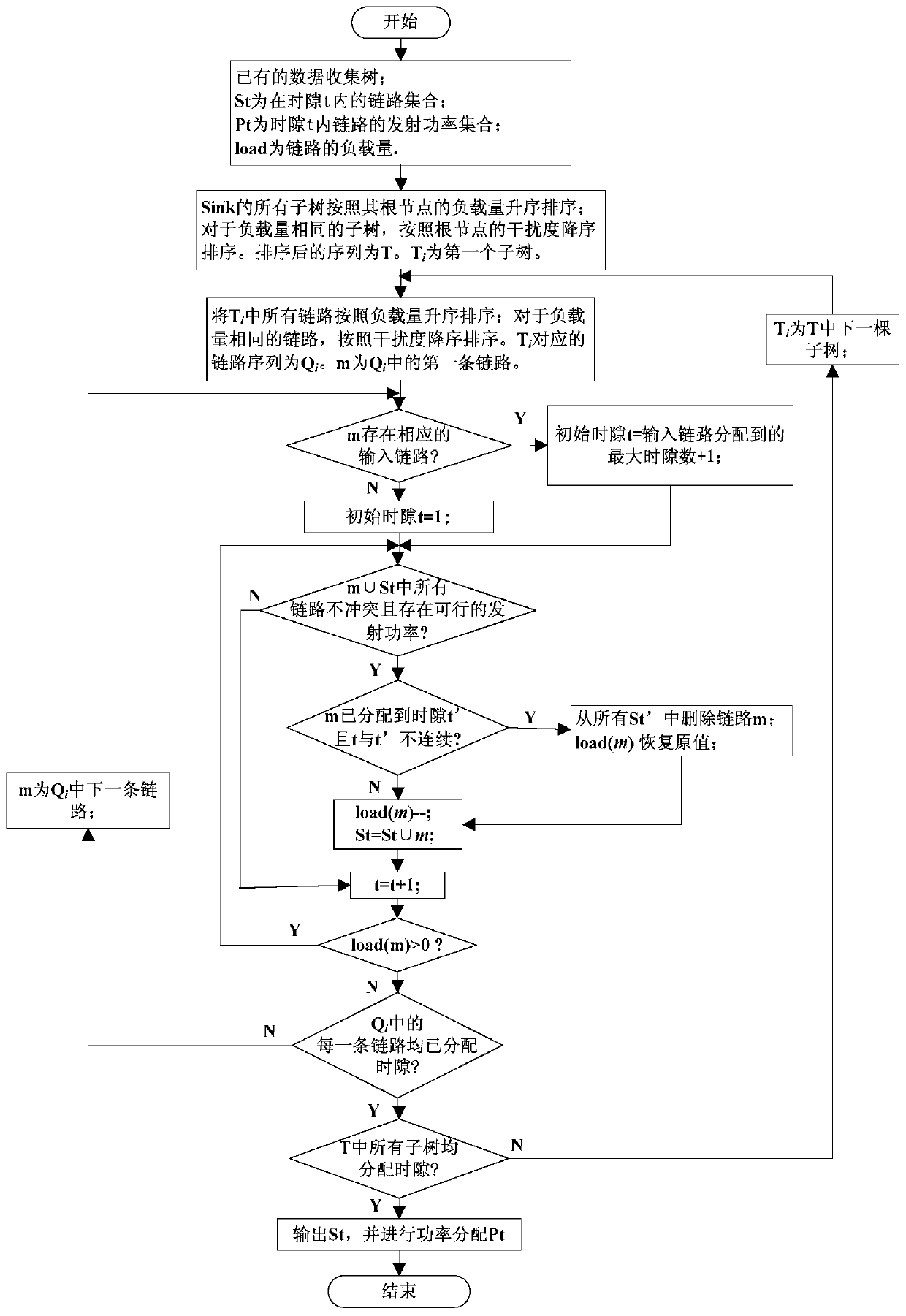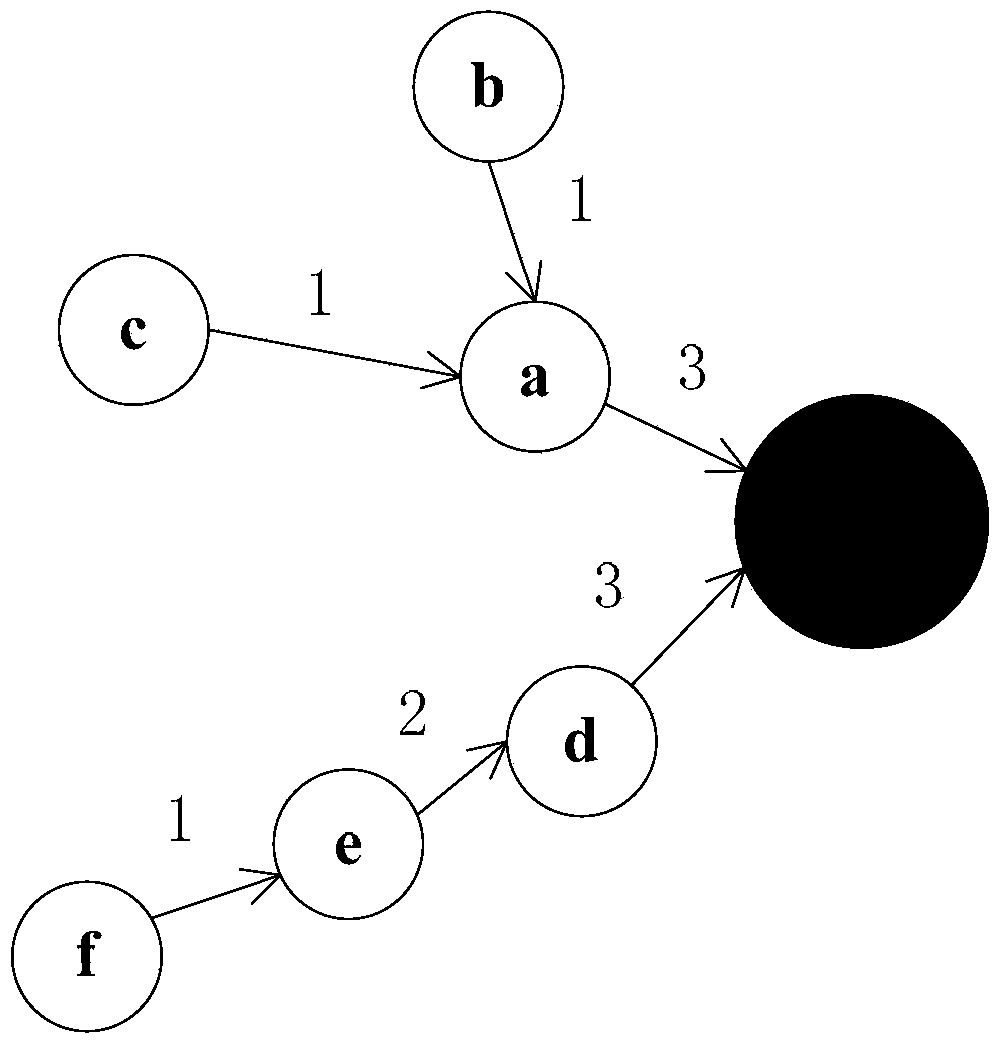An Energy Efficient Link Scheduling Method Based on Sinr Interference Model
An energy-efficient, link scheduling technology, applied in the direction of reducing energy consumption, advanced technology, electrical components, etc., can solve the problem of increasing the total number of time slots, reducing the number of links that can be scheduled at the same time, and increasing the network-wide data collection delay. and other problems to achieve the effect of reducing the number of state transitions and reducing the delay
- Summary
- Abstract
- Description
- Claims
- Application Information
AI Technical Summary
Problems solved by technology
Method used
Image
Examples
Embodiment Construction
[0069] The present invention will be further described below in conjunction with the accompanying drawings.
[0070] The data collection tree that embodiment adopts is as figure 2 shown. The simulation platform of the embodiment is MATLAB2012b. The sensor nodes are randomly distributed in the sensing area of 500×500m2. The maximum transmit power is -10dBm, and the Gaussian white noise power is -97dBm. The path loss exponent is 3.
[0071] The specific embodiment of the energy efficient link scheduling method based on SINR interference model comprises the following steps:
[0072] Step 1: Collect trees based on existing data ( figure 2 ), construct the interference graph ( image 3 ), S t and P t are all empty sets.
[0073] Step 2: Sort all subtrees of Sink in ascending order according to the load of their root nodes; for subtrees with the same load, sort them in descending order according to the interference degree of their root nodes; the sorted sequence T is: a...
PUM
 Login to View More
Login to View More Abstract
Description
Claims
Application Information
 Login to View More
Login to View More - R&D
- Intellectual Property
- Life Sciences
- Materials
- Tech Scout
- Unparalleled Data Quality
- Higher Quality Content
- 60% Fewer Hallucinations
Browse by: Latest US Patents, China's latest patents, Technical Efficacy Thesaurus, Application Domain, Technology Topic, Popular Technical Reports.
© 2025 PatSnap. All rights reserved.Legal|Privacy policy|Modern Slavery Act Transparency Statement|Sitemap|About US| Contact US: help@patsnap.com



